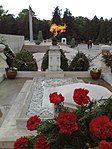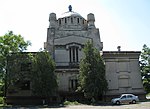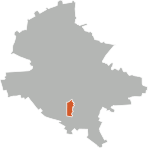Bucharest Sephardic Jewish Cemetery
1865 establishments in RomaniaCemeteries in BucharestJewish cemeteries in RomaniaSephardi Jewish culture in Romania

The Bucharest Sephardic Jewish Cemetery (Romanian: Cimitirul evreiesc Sefard din București) is one of three active Jewish cemeteries that still exist in Bucharest. The cemetery is located on 2 Olteniței Street, across the street from Bellu Cemetery, and was opened in 1865. It has an area between 4 and 5 hectares large, and contains 10,300 graves.
Excerpt from the Wikipedia article Bucharest Sephardic Jewish Cemetery (License: CC BY-SA 3.0, Authors, Images).Bucharest Sephardic Jewish Cemetery
Șoseaua Giurgiului, Bucharest
Geographical coordinates (GPS) Address Nearby Places Show on map
Geographical coordinates (GPS)
| Latitude | Longitude |
|---|---|
| N 44.402222222222 ° | E 26.096111111111 ° |
Address
Șoseaua Giurgiului
Șoseaua Giurgiului
041341 Bucharest (Sector 4)
Romania
Open on Google Maps








